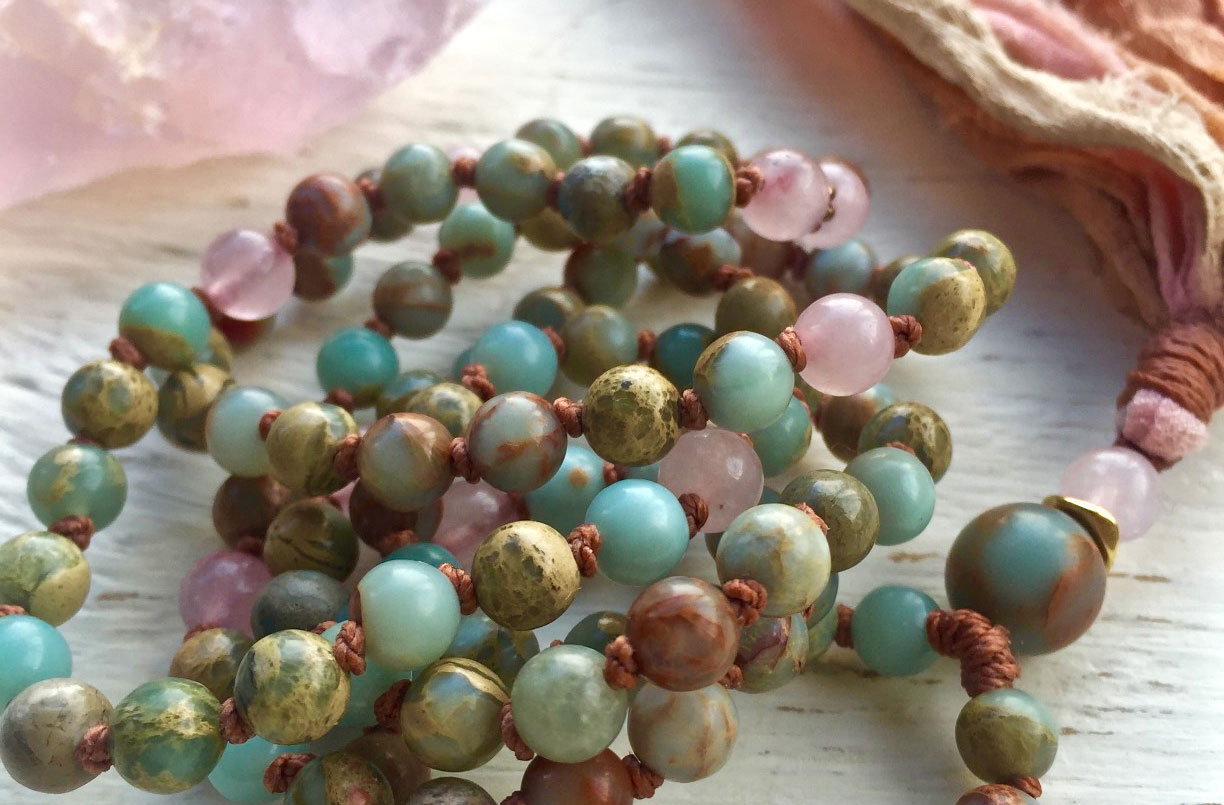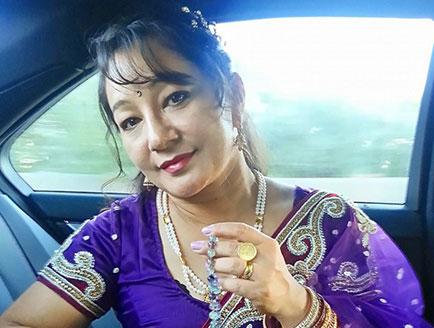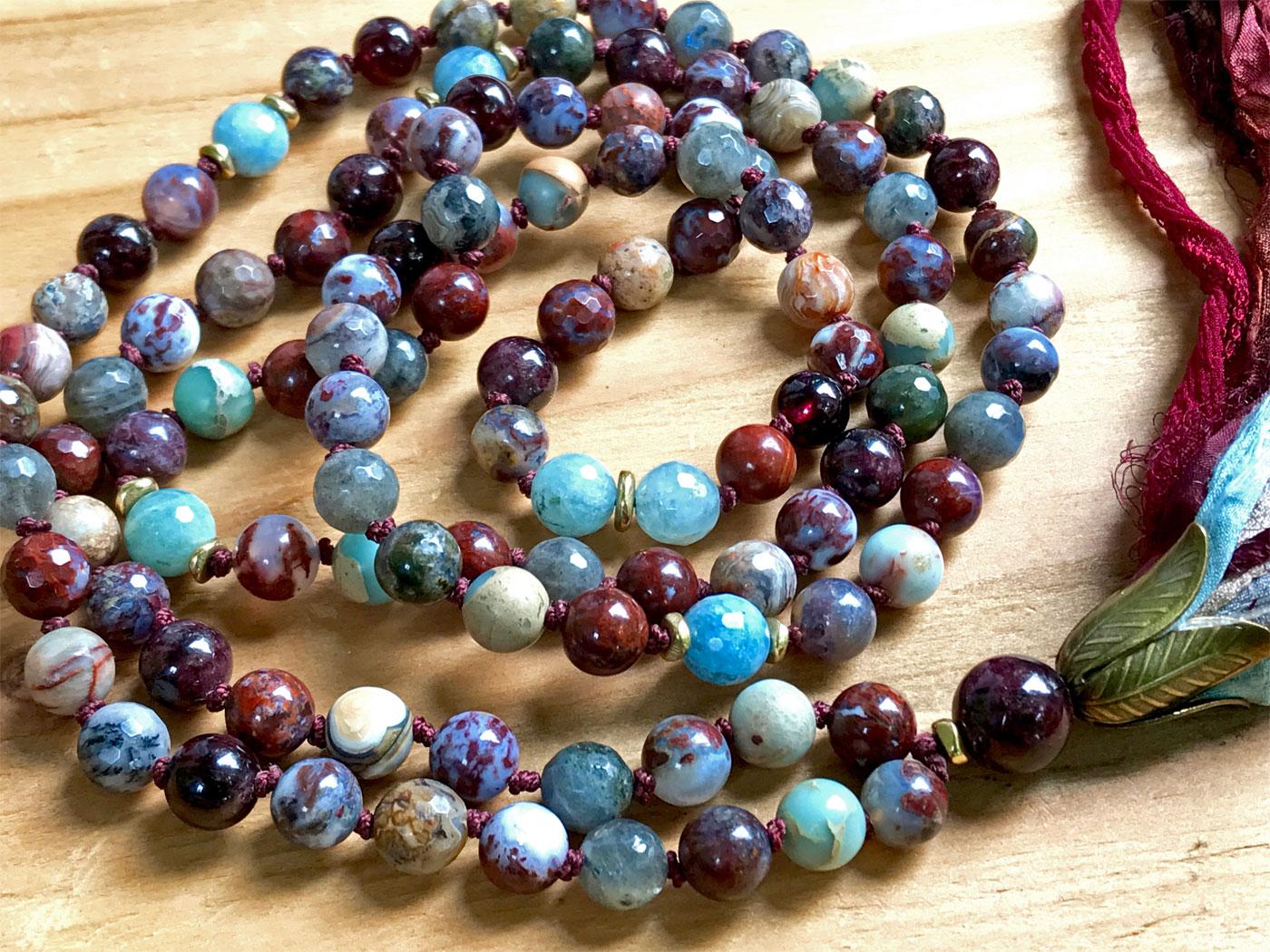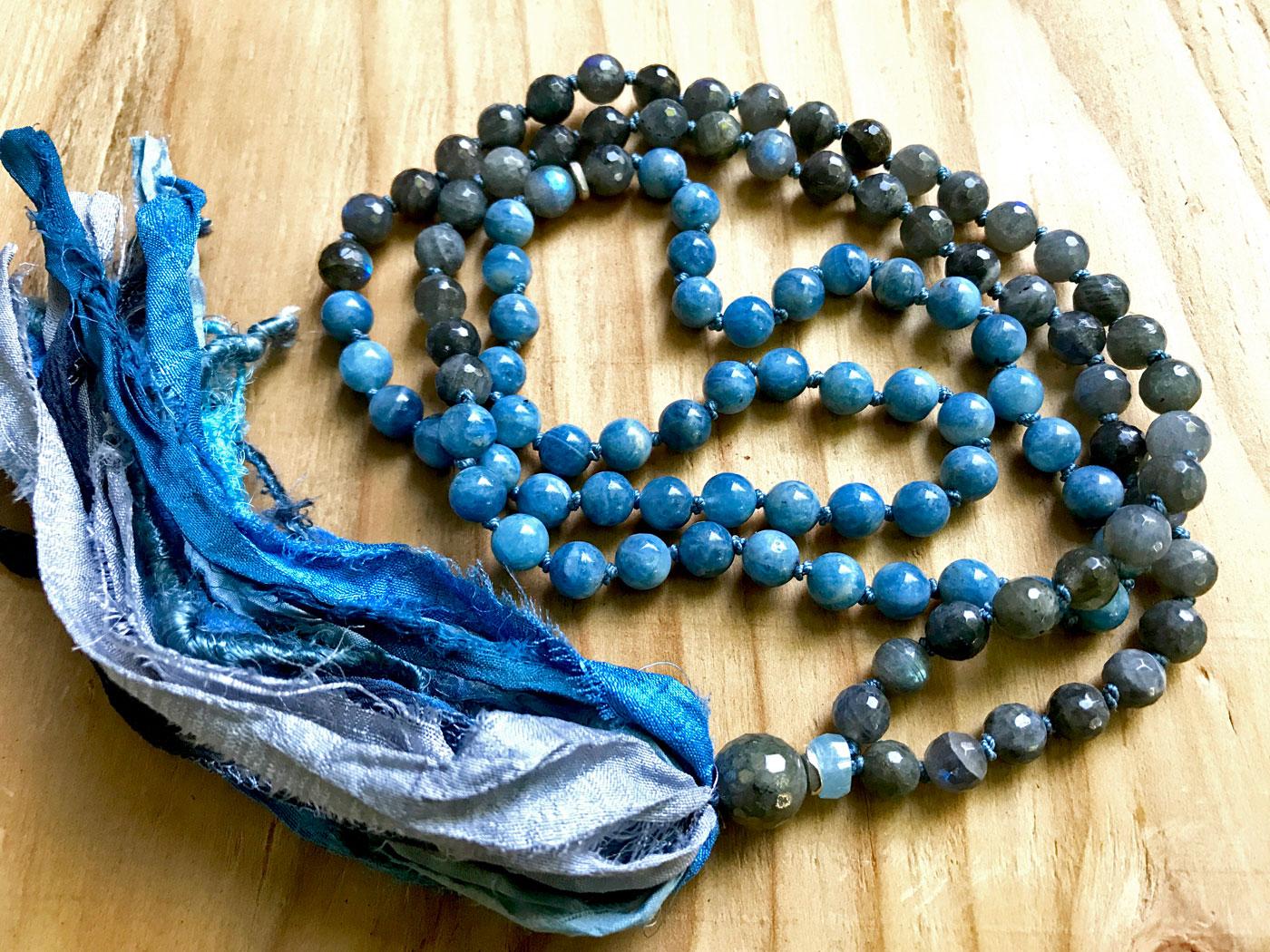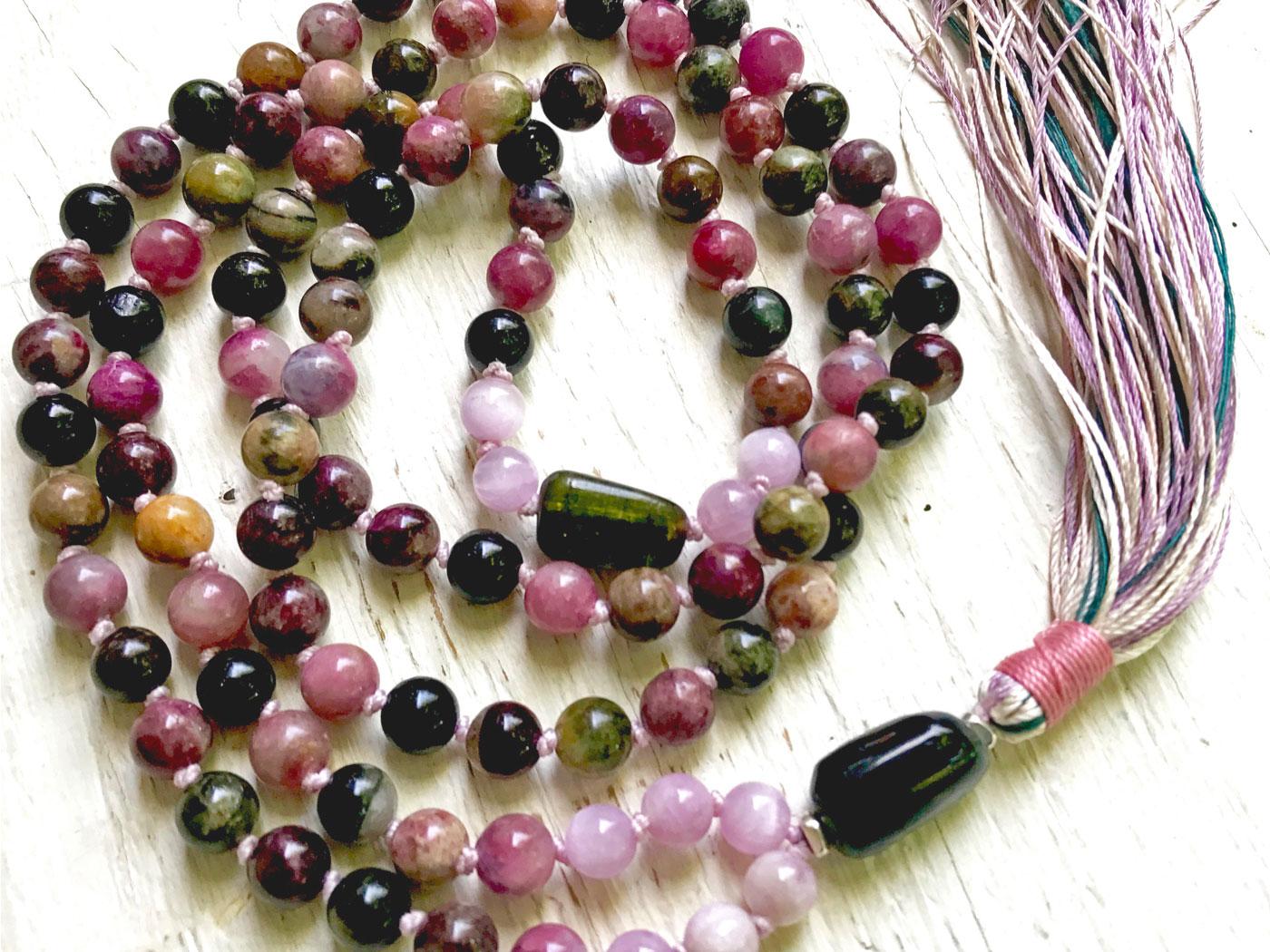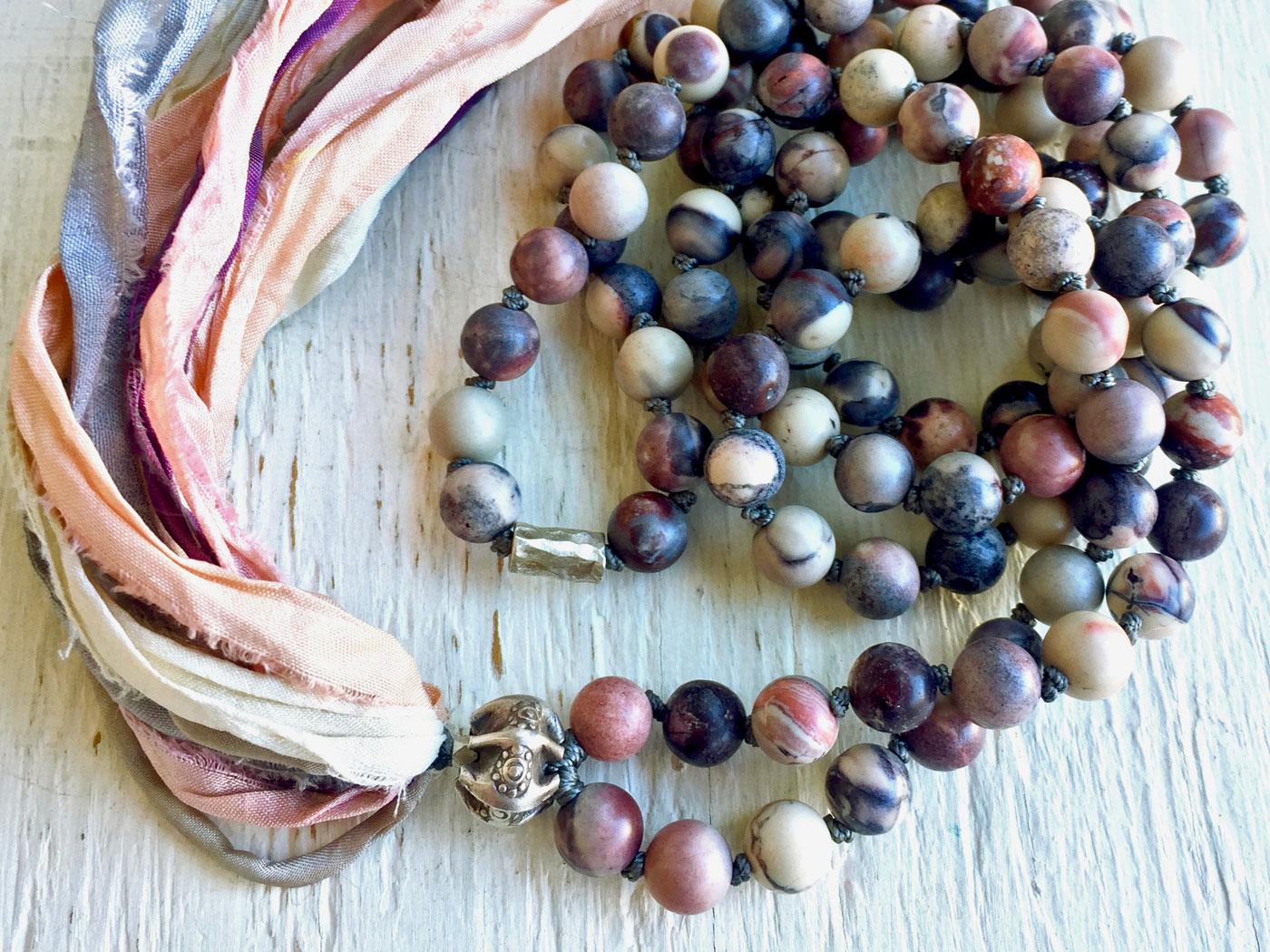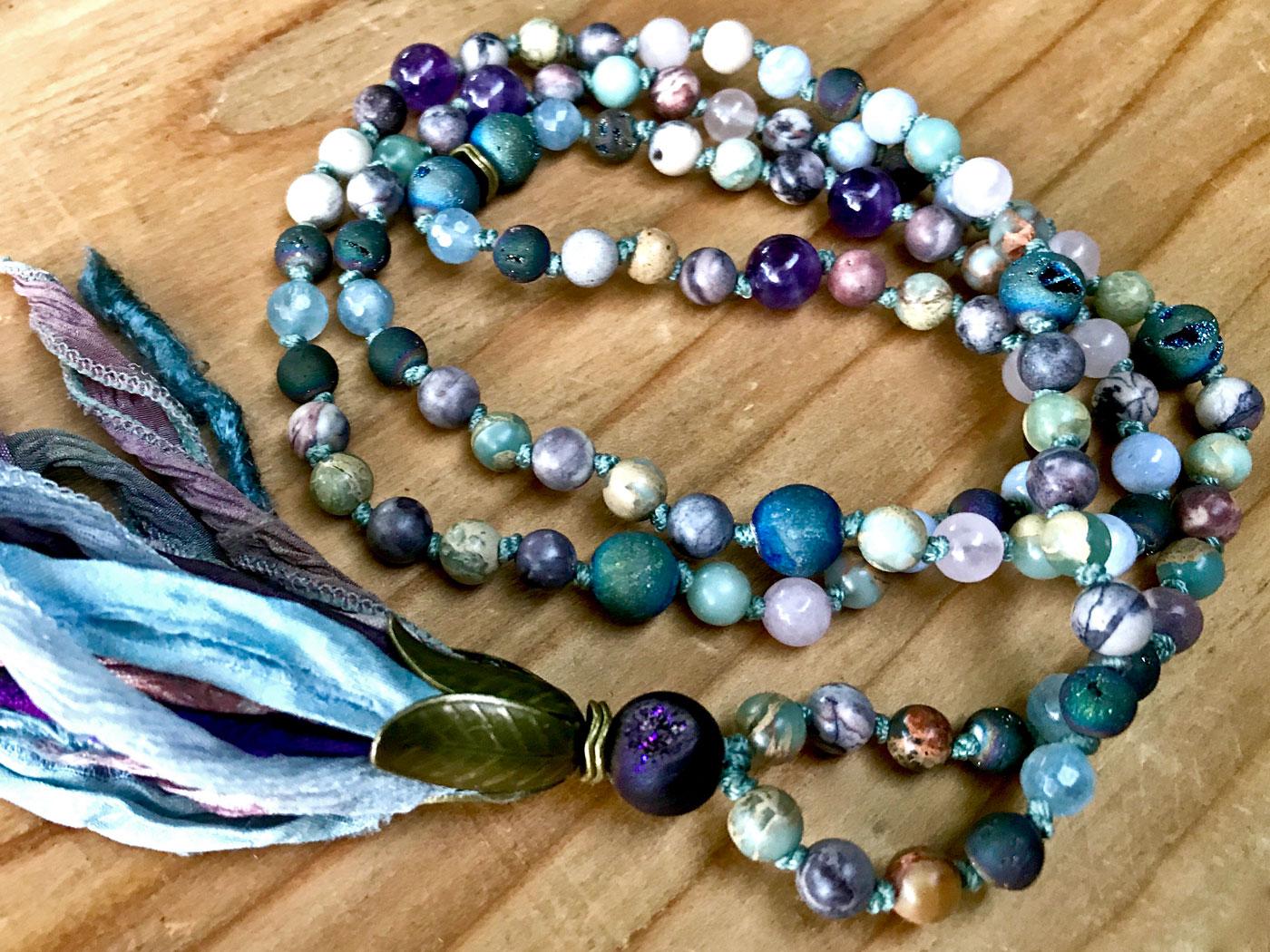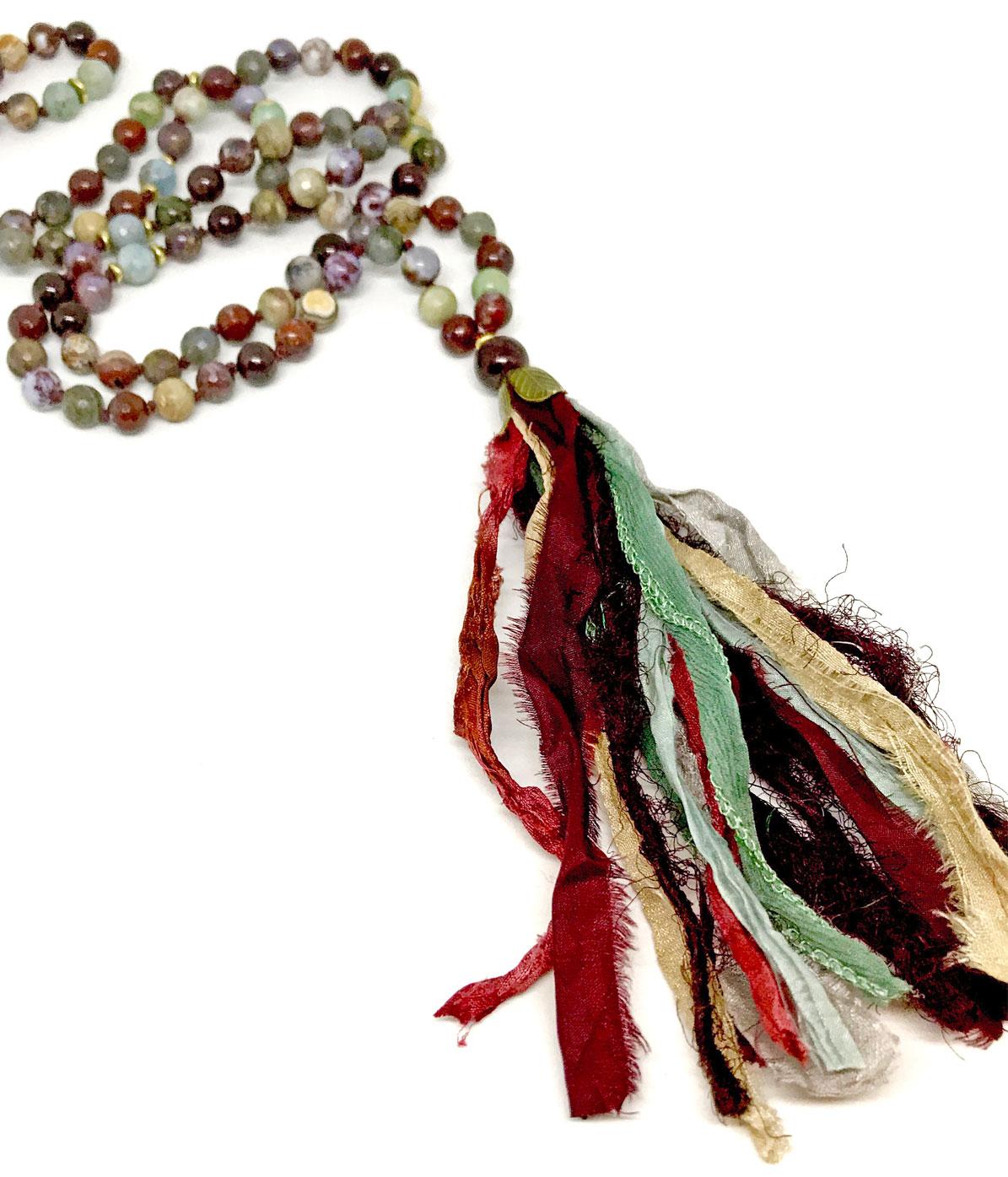Americans are getting wrapped up in mala beads, an ancient meditation tool. Both spiritual and fashion-forward women and men alike are embracing malas similar to the prayer beads worn by the Dalai Lama. Malas—the Sanskrit word for “garlands” — are weaving themselves into the mainstream, much in the manner of Tibetan prayer flags or incense.
“The mala goes back 8,000 years, some say 10,000 years,” said Sarita Shrestha, a native of Nepal who owns Tibet Imports in Denver.
The long strands hold 108 beads made of stones, bones, wood or seeds. The number 108 is auspicious and in Yogic tradition reflects 108 sacred sites known as pithas, located throughout India; as well as 108 panishads and 108 marma points, sacred places of the human body.
Worn as necklaces or bracelets, malas once were purveyed primarily by Tibetan import stores and yoga studios as material reminders of a spiritual practice. Now malas are turning up at department store jewelry counters and in preppy Vineyard Vines window displays or tony catalogs such as Sundance.
“I feel happy that people are open to it. Even men are getting malas. It’s people in a spiritual awakening who want a mala. And spirituality makes us want to do the right things,” Shrestha said. “But even if for fashion, for color, or dress-up, it makes me happy because people are still getting the energy of the mala.”
At Tibet House in New York City, Tenzin Sonam said, “The mala is a sacred object. We all have a mala. It’s part of life.”
“The mala is an object of habitual religious use to help to calm the mantra recitation,” said Sonam. “In Tibetan Buddhism, we consult the teacher if someone is not feeling well, or having certain doubts, or starting an important mission or job. The teacher says, ‘Recite this mantra 1,000 times or 10,000 times.’ So we use prayer beads to count.”
Individuals employ malas in almost as many ways.




